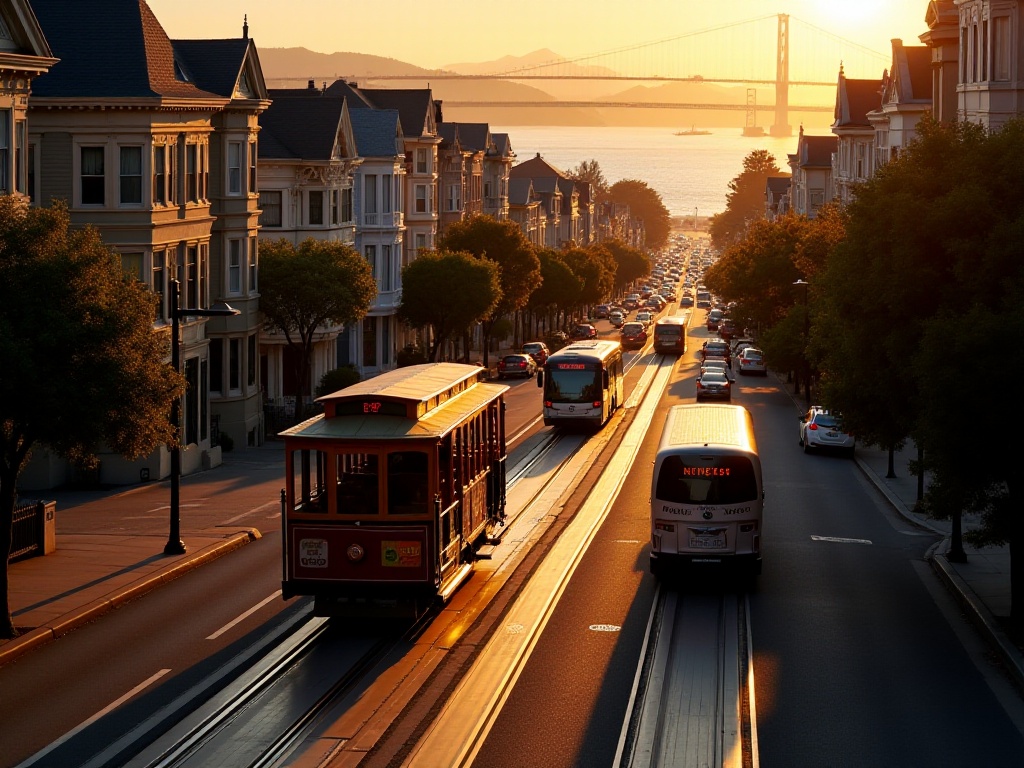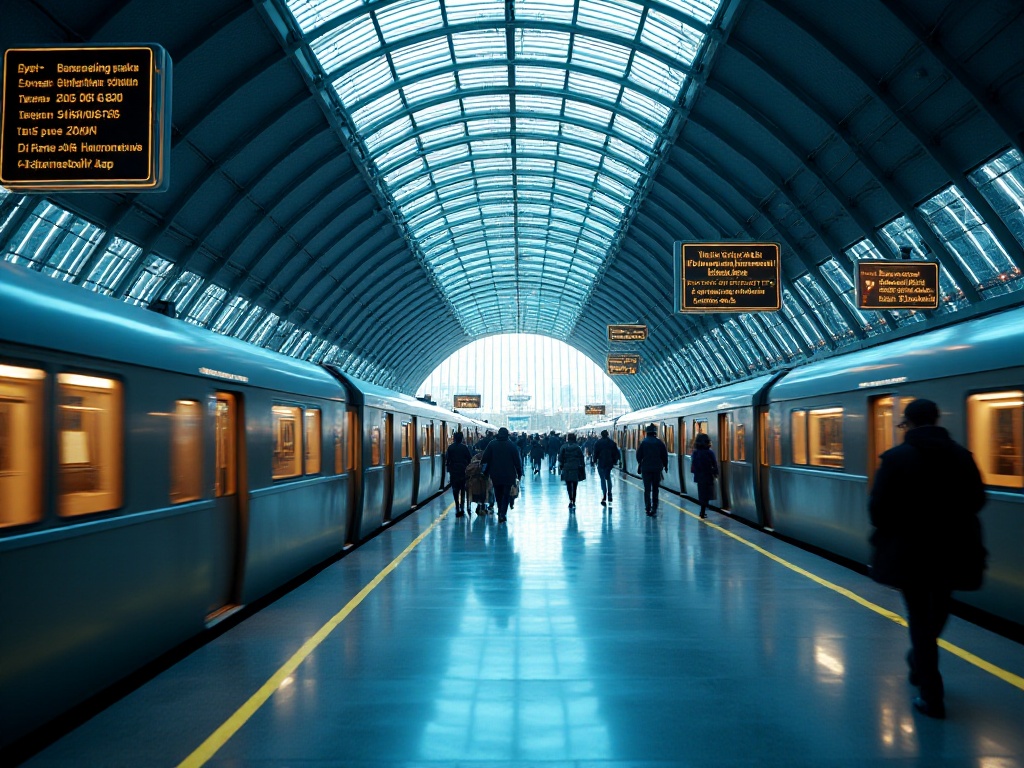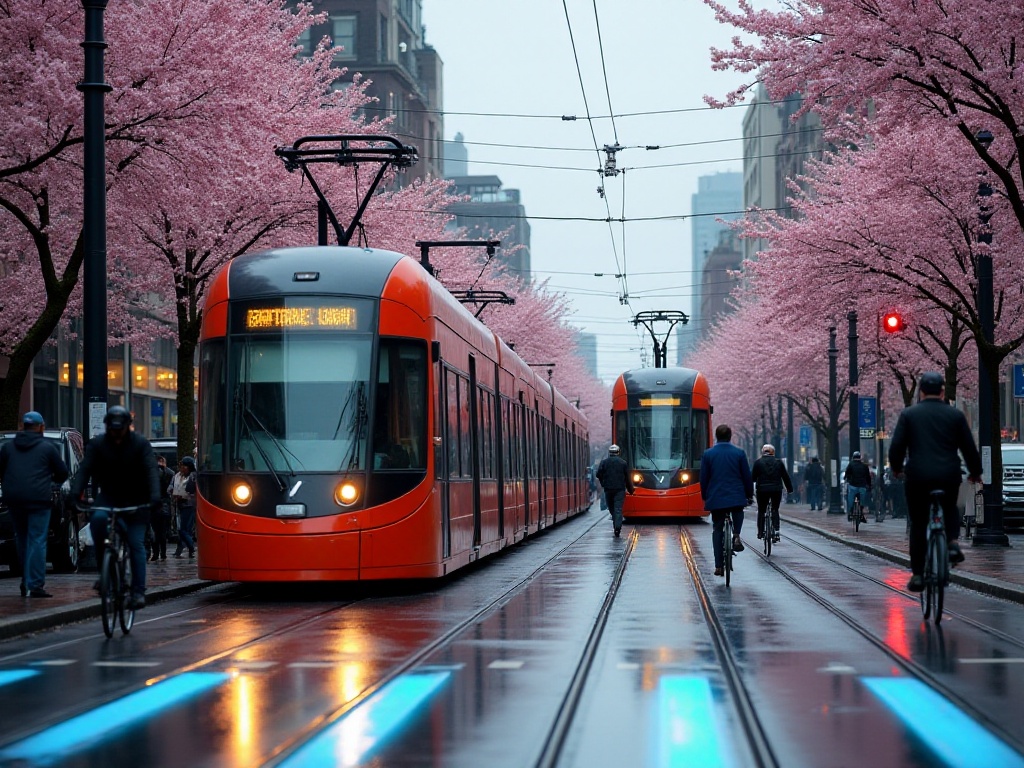Standing in the arrival hall of Kennedy Airport with two overweight suitcases, I was completely lost. People moved back and forth around me, various languages filled the air, along with the strong aroma of coffee. Being new to the city, I naively thought taking a taxi would be the best choice. Only when I saw the numbers jumping on the meter did I realize how unwise this decision was. The taxi fare from the airport to Manhattan was over $70 - that's my entire week's food budget! Not to mention the congestion fees and tips during peak hours.
That night, lying in my temporary hostel bed, I started seriously researching New York's public transportation system. It turned out I could take the AirTrain connecting to the subway to get from the airport to the city for less than $10. This price difference instantly made me understand why most New Yorkers choose public transportation.
Early the next morning, I couldn't wait to experience the New York subway. Standing at the subway entrance, I took a deep breath, clutching my subway map. Honestly, when I first saw that subway route map, my brain almost crashed. Various colored lines were tangled together like spaghetti, and the mixed number and letter route indicators made my head spin.
Red lines represent IRT routes, blue lines are IND routes, and orange lines are BMT routes. These technical terms were like hieroglyphics to me. Even more confusing was how the same subway line sometimes splits into multiple branches, with some trains being express, others local, some running during the day, and others only at night. Even locals get confused sometimes.
I remember making a classic rookie mistake my first time riding the subway. I wanted to take the N train from Times Square to Brooklyn but didn't check whether the platform was for uptown or downtown trains. After riding expectantly for 20 minutes, I realized I was heading in the opposite direction. At that moment, I finally understood why there were always confused tourists in the subway stations.
To navigate the New York subway system smoothly, first you need to understand the various ticket types. A single ride is $2.90, which might not seem high, but after several round trips in a day, the cost becomes quite substantial. I remember spending nearly $50 on subway fares in my first week.
Later I discovered more economical options. A 7-day unlimited pass is $34, and a 30-day unlimited pass is $127. Although the initial investment seems high, if you commute daily, this is definitely the most economical choice. I did the math: assuming two rides each workday, with 22 workdays per month, that's 44 rides. Using single ride tickets would cost $127.6, while the monthly pass is only $127, plus weekend and holiday rides are included.
Besides regular MetroCards, there are discounted cards for students, seniors, and disabled persons. The student monthly pass is only $63.50, but you must be a full-time student to apply. The application process isn't complicated - you just need to get certification from your school's student service center and then process it at designated subway stations.

Regarding subway safety, this is indeed a topic that cannot be ignored. Although New York's security situation has improved in recent years, extra vigilance is needed in this special space of the subway system. According to the latest NYPD statistics, subway crime rates in January 2024 decreased by 12% compared to the same period last year, but there are still some areas that need attention.
First is timing. Be especially careful when riding late at night, and try to avoid taking the last train alone. If unavoidable, it's recommended to sit in the first car near the train operator. According to statistics, the first car has the lowest crime rate.
Second is choosing the right car. I always habitually choose crowded cars, as they're not only safer but also provide help from others in suspicious situations. Also, stay away from empty cars, even if they look tempting.
While riding, I keep my backpack in front of me rather than behind. Valuable items should be kept in inner pockets. Be extra careful when using phones, as "phone snatching" is one of the most common types of subway crime. A friend of mine almost had their phone stolen while focusing on it on the platform.
Another important point is to be aware of your surroundings. If you notice suspicious persons or unusual situations, you can contact the train crew through the emergency intercom in the car or call 911. There are also multiple help buttons on the platform that connect directly to the subway control center.

After living in New York for a while, I gradually discovered that Google Maps isn't the best choice for route planning. It often recommends theoretically fastest routes, but actual situations are often affected by many factors. For example, it might suggest transferring at Union Square station, but if you're unfamiliar with the platform layout there, you might get lost in the maze-like passages.
I recommend using specialized subway navigation apps like Citymapper or Transit. These apps consider real-time train delays and show specific platform locations and exit information. More importantly, they tell you which car to ride in for the shortest transfer distance.
Speaking of transfers, many stations have little-known shortcuts. For example, at Times Square station, if you're transferring from the N/Q/R line to the 1/2/3 line, don't follow the signs - go directly up the stairs at the end of the platform to save at least 5 minutes. I learned these tips through repeated trials and asking locals.

7:30-9:30 AM and 4:30-6:30 PM are the most crowded subway times. During these periods, platforms at major stations are often packed with people, and you might need to wait for several trains before boarding. According to MTA data, average delay times during weekday peak hours range from 15-20 minutes.
My strategy is to travel during off-peak hours. For example, I choose to leave at 7 AM - while there are still many people, at least you don't have to be pressed face-to-face. If time adjustment is impossible, then you need some queuing techniques. On the platform, position yourself at door locations rather than in the middle of the crowd. This way, you have a chance to board when the train arrives.
In crowded cars, it's better to stand to the side of the doors rather than directly in front of them. This allows other passengers to enter and exit smoothly, and you won't get pushed around. If possible, wearing headphones to listen to music or podcasts can make crowded rides more bearable.

The most enchanting aspect of the New York subway is the street performers found everywhere. According to the New York Arts Council statistics, there are over 350 licensed performers in the subway system. These performers must pass strict reviews to obtain performance permits, which ensures the quality of performances.
My favorite is a saxophone player who often performs at Union Square station. He always wears a crisp suit and plays everything from jazz classics to popular hits. Every time I hear his performance, my tiring commute becomes more enjoyable.
There are also African drum groups whose performances are particularly infectious. The entire platform vibrates with their beats, and waiting passengers unconsciously sway to the rhythm. Sometimes, sudden flash mob dance performances turn ordinary subway stations into joyful stages.
These performers not only entertain passengers but also add unique cultural flavor to the New York subway. Although not everyone stops to appreciate them, their presence makes the city more vibrant and lively.
The subway is like a moving social microcosm, gathering all kinds of New Yorkers. In morning cars, you see Wall Street elites in suits, holding Starbucks, focused on their phones or tablets. They mostly choose window seats, trying to keep their suits crisp in crowded cars.
Art students appear more casual, carrying drawing boards or instruments, sometimes sketching quickly in notebooks. Brooklyn's artistic youth often wear vintage clothing with dramatic accessories, adding splashes of color to the cars.
At noon, you often see homemakers with shopping carts, perhaps just finished grocery shopping in Chinatown or Hispanic neighborhoods. In evening cars, tired construction workers and restaurant staff occupy most seats, some catching brief naps against windows.
Most interestingly, regardless of identity, almost everyone looks down at their phones. This seems to have become an unwritten subway etiquette, as if staring at phones maintains some privacy in crowded spaces.

In New York summers, the subway becomes a moving sauna. Although the subway company claims 75% of cars have air conditioning, from my experience, at least a third have inadequate cooling. Sometimes you encounter cars with completely failed air conditioning, which is unbearable.
I've summarized some summer travel tips. First, always carry a small fan and water. Although drinking on the subway isn't very polite, a few sips of water can help when it's unbearably hot. Second, wear light, breathable materials, preferably avoiding dark colors as they absorb more heat.
While waiting for trains, avoid standing in the middle of the platform. That's usually the hottest spot and faces blast waves from approaching trains. Better to stand at platform edges, where there's usually some airflow.
If you encounter a car with failed air conditioning, don't hesitate - switch to the next car. Although this might take extra time, it's better than suffering in stifling heat. At transfer stations, if there are multiple transfer passages, choose air-conditioned ones. For example, at Times Square station, some passages have air conditioning, making walks more comfortable.
While winter subways are warm, they bring other challenges. First is weather impact. Heavy snow often causes train delays or suspensions. Last winter's blizzard paralyzed the entire subway system for 8 hours, stranding countless commuters. Since then, I always keep several ride-hailing apps installed as backup.
The biggest winter riding issue is temperature differences. Outside might be below freezing, but enter a subway station and temperature rises above 20 degrees. These dramatic temperature changes easily cause colds. I recommend layered dressing to adjust to environments.
In winter, subway station floors often become slippery. Especially at entrances, melted snow forms thin ice. So wear non-slip shoes and walk carefully. Some stations spread salt to prevent icing, but not all do.
Another note is that winter subways often experience delays. This is because low temperatures affect signal systems and track switches. So allow extra time in winter, especially for important appointments. I usually leave 30 minutes early, so delays won't make me late.
In these years living in New York, the subway has become an indispensable part of my life. It has witnessed my joys and frustrations, my growth and transformation. The morning rush hour anxiety, the fatigue on late-night last trains, have all become part of my New York life.
The subway, like New York City itself, has its flaws and unique charms. It's not perfect, but it truly reflects this city's face. In the subway, you see all kinds of people, hear conversations in various languages, feel the collision of different cultures. Perhaps this is New York's most fascinating aspect.
Whenever I stand on subway platforms, watching trains come and go, listening to platform performers, I think of myself when I first arrived in New York. Back then, I would panic about riding in wrong directions, feel lost about transfers. But now, I can navigate this underground city confidently, like a true New Yorker.
This is my New York subway story, also a microcosm of millions of New Yorkers' experiences. Everyone has their own subway story, these stories weaving into this city's unique landscape.
 Previous
Previous
